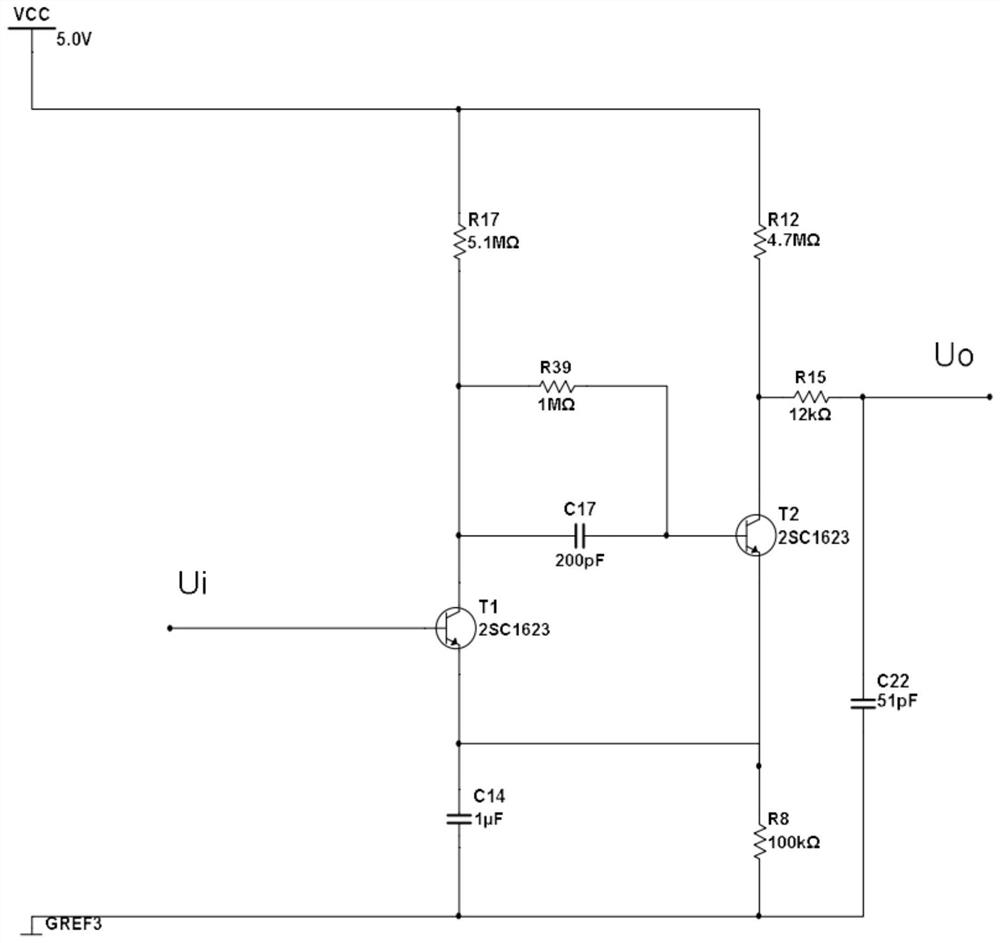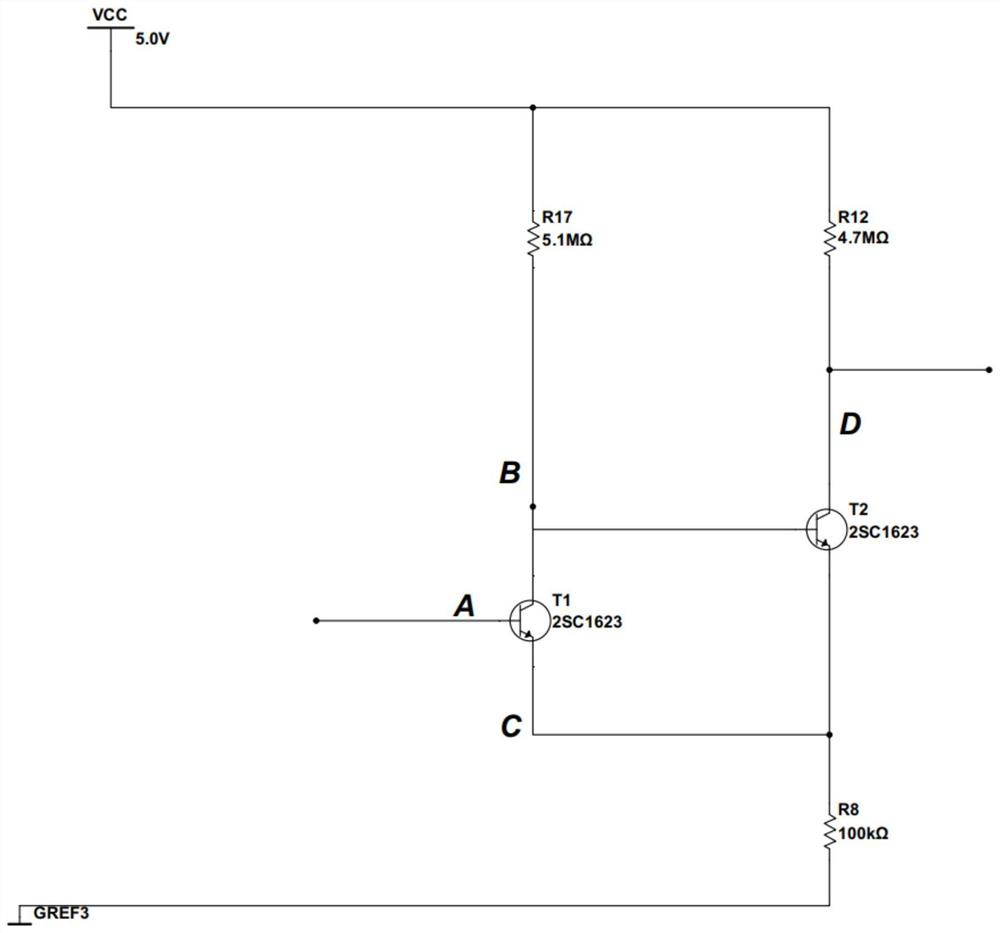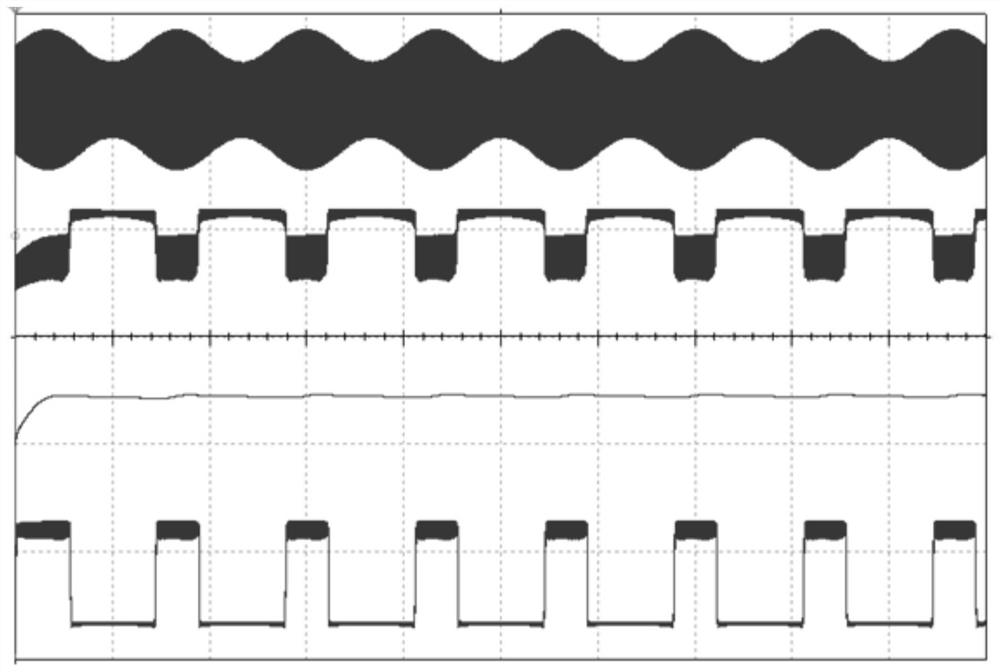Envelope detection circuit based on Schmitt circuit and working method thereof
A circuit and wave envelope technology, which is applied in the field of AM wave demodulation circuit, can solve the problems such as the inability to effectively reflect the changing law of the envelope and the inability to realize AM wave demodulation, etc., and achieve the effect of simplified structure, rapid pulse inversion and stable performance.
- Summary
- Abstract
- Description
- Claims
- Application Information
AI Technical Summary
Problems solved by technology
Method used
Image
Examples
Embodiment 1
[0031] A kind of envelope detection circuit based on Schmidt circuit, such as figure 1 As shown, it includes two cascaded identical NPN transistors, three capacitors, and five resistors; two cascaded identical NPN transistors include a first transistor T1, a second transistor T2, and three The capacitor includes the first capacitor C14, the second capacitor C17, and the third capacitor C22, and the five resistors include the first resistor R8, the second resistor R17, the third resistor R12, the fourth resistor R39, and the fifth resistor R15;
[0032] The first capacitor C14 is connected in parallel with the first resistor R8; the second capacitor C17 is connected in parallel with the fourth resistor R39; the third capacitor C22 is connected in series with the fifth resistor R15; The collector of the first triode T1 is connected to the base of the second triode T2, the emitter of the first triode T1 is connected to the emitter of the second triode T2; one end of the first ca...
Embodiment 2
[0039] The working method of the envelope detection circuit based on the Schmidt circuit described in embodiment 1 comprises the steps as follows:
[0040] (1) The amplitude modulation wave is input from the base of the first triode T1 in the envelope detection circuit, and the first resistor R8 and The first capacitor C14 together forms an envelope detection circuit to perform peak envelope detection on the input AM wave, and the emitter of the first triode T1 outputs the AM wave envelope;
[0041] (2) The AM wave envelope passes through the reconstructed Schmidt circuit, and the amplitude of the AM wave envelope exceeds the upper limit flipping threshold V of the Schmidt circuit 1 , at about 0.65V, the state of the Schmitt circuit flips, and the second triode T 2 The collector output voltage jumps rapidly from low potential to high potential; when the amplitude of the amplitude modulation wave envelope is less than the lower limit flipping threshold V of the Schmidt circuit...
PUM
 Login to View More
Login to View More Abstract
Description
Claims
Application Information
 Login to View More
Login to View More - R&D
- Intellectual Property
- Life Sciences
- Materials
- Tech Scout
- Unparalleled Data Quality
- Higher Quality Content
- 60% Fewer Hallucinations
Browse by: Latest US Patents, China's latest patents, Technical Efficacy Thesaurus, Application Domain, Technology Topic, Popular Technical Reports.
© 2025 PatSnap. All rights reserved.Legal|Privacy policy|Modern Slavery Act Transparency Statement|Sitemap|About US| Contact US: help@patsnap.com



